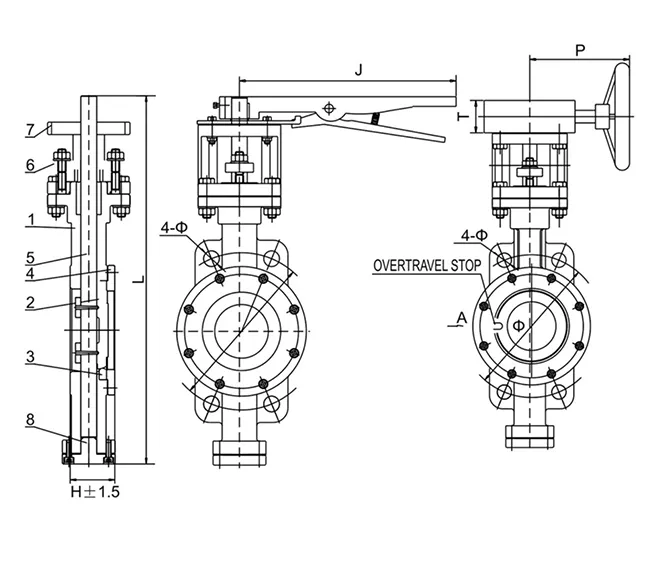dec . 14, 2024 17:11 Back to list
actuated ball valve
Understanding Actuated Ball Valves Key Features and Applications
An actuated ball valve is an essential component in many industrial processes, offering effective control of fluid flow through pipes. This type of valve combines a traditional ball valve design with an actuator, which automates its operation. The result is a device that not only allows for quick and precise control of flow but also enhances the safety and efficiency of various systems.
What is a Ball Valve?
A ball valve is a type of quarter-turn valve that uses a spherical disc, known as a ball, to control the flow of fluid. The ball has a hole through its center, allowing flow when aligned with the pipe, and blocking it when turned 90 degrees. This design offers minimal resistance and quick shut-off capabilities, making ball valves ideal for on/off applications.
Adding Actuation The Benefits
To automate the operation of a ball valve, an actuator is integrated. There are various types of actuators, including electric, pneumatic, and hydraulic, each suited for different applications and operational environments. The key benefits of using actuated ball valves include
1. Enhanced Efficiency Actuated ball valves respond quickly to commands, reducing the time required for flow control. This speed is crucial in systems where process conditions may change rapidly.
2. Remote Operation With actuated valves, operators can control fluid flow from a distance, which is particularly important in hazardous or hard-to-reach areas. This capability not only improves operational safety but also allows for better process monitoring.
actuated ball valve

3. Automation Compatibility These valves can be easily integrated into automated systems, such as SCADA (Supervisory Control and Data Acquisition) systems, facilitating advanced control strategies and increasing overall plant efficiency.
4. Improved Safety In critical applications, the reliable and rapid operation of actuated ball valves can help prevent spills, leaks, or other hazardous situations. This is especially important in the oil and gas industry, chemical processing plants, and water treatment facilities.
5. Consistency in Operation Automated actuation ensures that valves are opened and closed at predetermined rates, providing consistency and reliability in processes where flow rates must be managed carefully.
Applications of Actuated Ball Valves
Actuated ball valves are found in a plethora of industries and applications, including
- Oil and Gas Used for controlling the flow of crude oil and natural gas, ensuring safety and efficiency in pipelines and processing facilities. - Water Treatment Essential in managing water flow, especially in treatment facilities where precise control can affect water quality and system performance. - Chemical Processing Used to handle corrosive substances, these valves ensure optimal flow control while maintaining system integrity. - Power Generation Actuated valves play a critical role in cooling systems, steam lines, and other areas within power plants.
Conclusion
Actuated ball valves are indispensable in many industrial applications, combining the advantages of traditional ball valve designs with the benefits of automation. As industries continue to seek greater efficiency, safety, and control in their processes, the demand for actuated ball valves is expected to grow. Investing in this technology not only optimizes fluid management but also aligns with the ongoing trend toward automation and smart manufacturing solutions. Understanding the unique features and wide-ranging applications of actuated ball valves can help industries make informed choices that enhance their operational capabilities.
Share
-
Reliable Wafer Type Butterfly Valves for Every IndustryNewsJul.25,2025
-
Reliable Flow Control Begins with the Right Ball Check ValveNewsJul.25,2025
-
Precision Flow Control Starts with Quality ValvesNewsJul.25,2025
-
Industrial Flow Control ReliabilityNewsJul.25,2025
-
Engineered for Efficiency Gate Valves That Power Industrial PerformanceNewsJul.25,2025
-
Empowering Infrastructure Through Quality ManufacturingNewsJul.25,2025